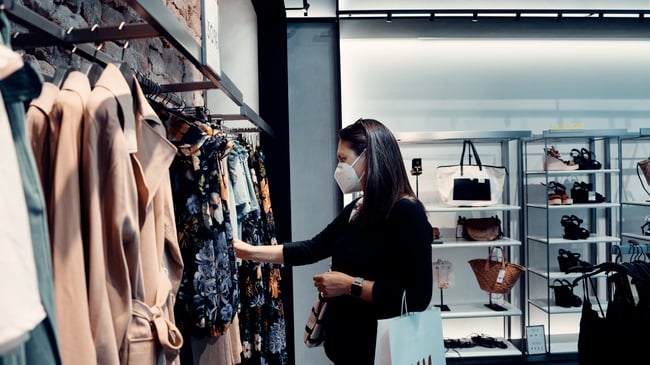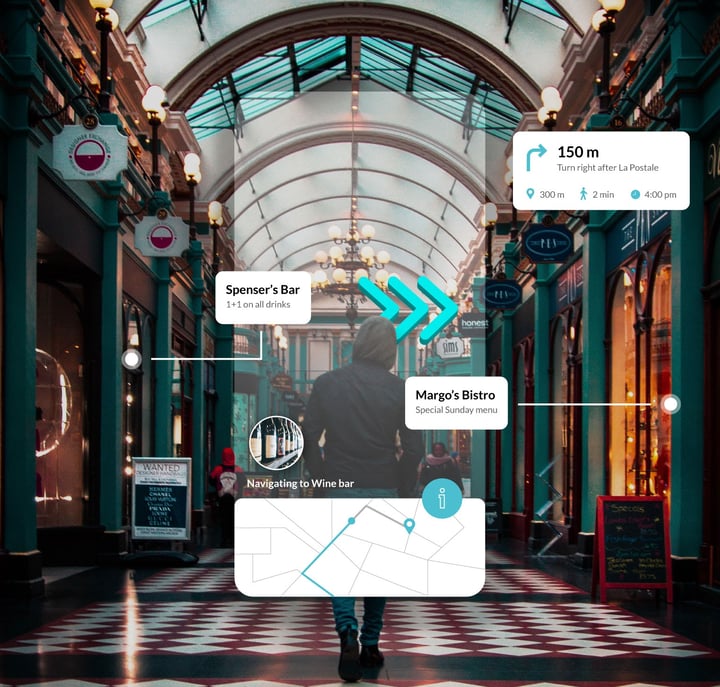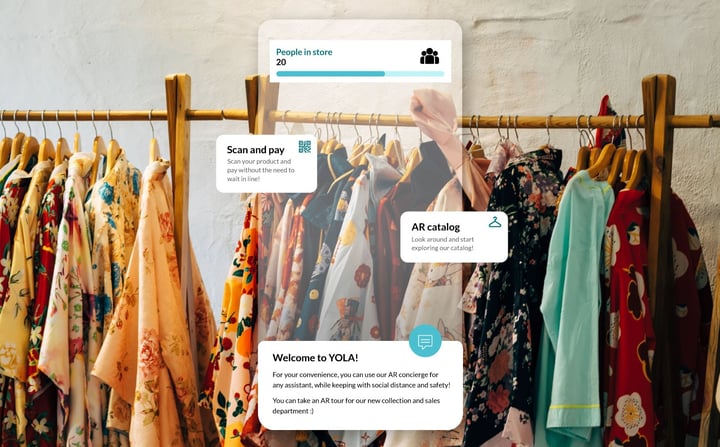3 Ways Retailers Can Use Augmented Reality to Increase Sales
AR can help you create compelling, unique retail experiences that deepen customer engagement and increase sales — here’s how.

In a world where everything is online and connected, many retailers are using modern technology like augmented reality, artificial intelligence, and the internet of things to rethink the classic brick-and-mortar experience. While this high-tech retail revolution started long before the unexpected events of 2020, the COVID-19 pandemic has hastened the need to shift gears in order to meet new customer expectations in physical spaces.
Smart retailers are already using AR in behind-the-scenes applications like planogramming, training, and hands-off tech support, but there are a number of ways this technology can enhance the customer experience as well. From Sephora’s innovative Virtual Artist feature to IKEA’s AR furniture app, the possibilities are practically endless. Best of all, AR technology can be adapted to deliver engaging, on-brand experiences, no matter what products you’re selling or who your customer base is.
This article details some of the ways AR technology can be used to drive sales in the modern retail environment. Now more than ever, customers expect a fluid, intuitive retail experience, and AR applications are a cost-effective way to keep them engaged and foster sales. Let’s get started!
#1: Personalized shopping with AR navigation
When customers step foot in your stores, each individual comes in with different needs and expectations. What if you could deliver personalized shopping experiences to targeted customers every single time? AR technology can be used to create customizable, adaptable experiences that get noticed — as if you were able to offer a personal concierge for every customer that comes through the door.
Augmented reality serves as a navigational guide in these scenarios, enabling you to help each customer find what they need. You can literally control their experience by telling them which aisle to walk down or which shelf to look at. Along the way, AR enables you to give personalized recommendations and promotions designed to increase sales based on what you know about a customer’s preferences and behaviors. And because you’re no longer limited by physical spaces and objects, these specially tailored displays can be more creative and memorable than would be possible without AR.

#2: Engaging, timely AR brand experiences
Many retailers will boost sales by featuring end caps or staging merchandise to promote a certain brand, discount, or seasonal item. Setting up these displays can be time-consuming and costly, and worse: They’re often overlooked or completely ignored by customers. AR helps retailers create engaging, timely promotional displays, and other brand experiences that capture customers’ attention.
AR apps can enhance promotional displays by bringing product information to life, showing the product in action, or engaging users in branded gamification experiences. For example, the athletic clothing retailer Tilly’s used AR to offer a back-to-school themed scavenger hunt in its stores, which encouraged customers to explore some of the parts of its stores that they might not otherwise have visited.
AR displays can be updated more easily than physical displays, too, making it easier to swap out new displays for each holiday, seasonal occurrence, or even cultural events like major sports games. It’s also easier to update content remotely, and ensure consistency across a large network of stores.

#3: A deeper level of data
By offering AR displays and experiences in brick-and-mortar stores, retailers create engaging experiences that affect customer behaviors, sometimes in new and unexpected ways. Fortunately, customers’ use of AR also enables you to collect invaluable data and gain invaluable insights into those behaviors. AR solutions offer data that can be helpful to retailers by:
- Analyzing traffic flow, traffic patterns, hot spots, and zone behaviors to ensure that customers are moving through the store and engaging with AR displays as intended
- Identifying customer pain points so you can adjust accordingly and give shoppers the best possible experience
- Gaining a more comprehensive understanding of the complete customer journey.
Welcome to the future of retail
Just a decade ago, using augmented reality to enhance the in-person retail experience might have seemed like something out of a futuristic sci-fi movie. However, the retail industry is meeting that future head-on, and the events of 2020 have only highlighted the need for AR technology in stores.
At Resonai, we’re ready to help retailers tackle the challenges of 2020 and beyond. With Vera, an AI platform designed with commercial spaces in mind, we can transform physical buildings into intelligent digital spaces that open the doors to a number of exciting and innovative retail applications, such as smart visual merchandising, navigation and product discovery, branded experiences, and others.
Ready to learn more? Get in touch to set up a demo.
Subscribe to Our Newsletter!
Read More
5 Augmented Reality Real Estate Apps Helping Commercial Realtors Succeed
Closing a deal in the world of commercial real estate has historically been a lengthy and...
How to Get the Most Out of Smart Building Upgrades
Building management is a costly, time-consuming endeavor. With routine maintenance, tenant...
Leading Retail Brands Profiting From Experiential AR
As our real and digital worlds become interconnected, augmented reality (AR) proves itself to be...
